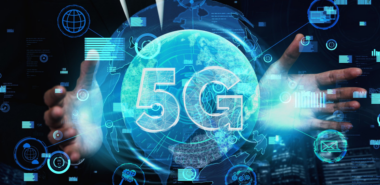“One of the things that we’ve been hearing today is that software is everywhere. This isn’t a trend. This isn’t a buzzword. This is reality.”
At a recent Ask the Experts Webinar, Jam Khan, Director of Professional Services at Gemalto, certainly wasn’t mincing words when it came to discussing software’s role in today’s technological world.
He’s talking about the role of software that exists in what has recently, and traditionally, been a hardware-centric world. Software is taking charge, and it’s time to pay attention.
With the increased growth of the IoT across such a multitude of industries, many hardware vendors are noticing and oftentimes struggling to keep up with the increase emphasis on software capabilities. What’s interesting, is that the shift isn’t necessarily a heightened focus on software requirements, but rather the customer-driven desire for additional features and capabilities.
The users want to do more with what they have. They want real-time features, lightning-quick updates; the customers are simply consuming software in ways that have never been seen before.
All thanks to the IoT.
The new opportunity
Think about the new line of Tesla vehicles. When the company wants to roll out a new functionality or fix it does so via over-the-air software updates that immediately enhance each vehicle connected to the network. The IoT isn’t about sending your grocery list from your fridge to the supermarket, it’s about getting the most and best out of your product’s software right now.
With an increase in software capabilities comes an uptick in devices being connected to these companies’ servers and therefore more devices linking into the IoT. It’s cyclical. You have an industry such as the automotive industry that for decades has been all about hardware, suddenly being controlled by software as much as by the car itself. The customers are very clear about wanting better software updates and it’s up to the hardware vendors to determine how they take advantage of this data.
While the IoT has been around for a while, it’s still a relatively new concept. The IoT is a product of the mentality of this current generation – aka the “now” generation. Millennials and the vehicle owners of 2017 (sticking with the automotive industry concept) are far less interested in the concept of ownership and are gravitating towards a rental mentality. How can I utilize this product now? How will this service benefit me now? I don’t want to think about a five year lease. I want Uber. I want Zipcar. I want updates to my Tesla to get me out of this situation.
The outcome of such a reality is a simple word that connects both hardware and software: data. There are two types of data that interest companies in the IoT, the first being the simple notion of customer data: what works in certain markets, who is purchasing the products, how many of each product is being purchased, etc. The second type is directly correlated with the influx of IoT companies. This is data received from the devices, often in real time.
Real-time data provides insight into advertising methods, product usage, and customer-driven requirements in ways that have never been accessible to companies. Remember the notion that the IoT is cyclical? Well companies are connected more of their devices to the cloud and online servers, they are feeding software updates the customers, receiving feedback and customer data and implementing new software (and eventually hardware) tweaks and then seeing how that translates into new customer data.
It’s a perfect system, and there’s an additional added benefit: monetization.
Developing revenue models
IoT companies, after utilizing all of this data, are perfecting their pricing models and learning how to monetize in the right way and to the right people. They are giving customers the value they truly want instead of the product they think the customer would want.
As Khan also pointed out, “relying on hardware and loyalty has its perils because it is easily replaceable as well. Now, [with IoT-based value capture] you’re looking at what the value continuously being delivered is and what that software experience is.”
No longer are hardware vendors relying solely on a line of customers buying their products year in and year out, because people simply don’t act that way anymore. They are not paying close attention to the user experience, the data and the value to the customer and defining how to monetize that.
Providing the end users with a value they appreciate, within a pricing model that is rooted in customer data and experience isn’t just the way of the future. It’s the way of now. And in the now generation, these monetization and customer strategies must be part of a software company’s IoT efforts. Otherwise they’ll end up on the shelf with all the obsolete hardware from yesteryear.
You can watch the entire presentation here.


